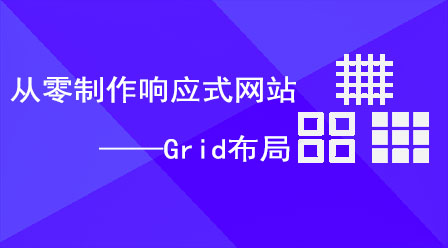JavaScript中indexOf查找元素位置方法
时间:2025-07-11 15:32:32 228浏览 收藏
在JavaScript中,`indexOf`是一个基础且实用的方法,用于在字符串或数组中查找指定元素或字符首次出现的位置。本文深入探讨了`indexOf`的用法,包括它在字符串和数组中的不同行为,以及如何通过`fromIndex`参数实现更精确的查找。同时,文章还解释了`indexOf`返回-1的含义,并提供了利用循环查找所有匹配项的技巧。此外,还对比了`indexOf`与`lastIndexOf`、`find`、`findIndex`和`includes`等方法的区别,帮助开发者在不同场景下选择最合适的工具,提升代码效率和可读性。掌握`indexOf`的用法,能有效提升JavaScript编程能力。
JavaScript 的 indexOf 方法用于查找字符串或数组中指定元素或字符的首次出现位置,若未找到则返回 -1。1. 对字符串而言,indexOf() 从指定 fromIndex 开始搜索,返回第一次出现的索引,如 sentence.indexOf("world") 返回 7;2. 对数组而言,它使用严格相等(===)比较元素,如 fruits.indexOf("apple", 1) 返回 3;3. 若未找到匹配项,则统一返回 -1,常用于条件判断,例如检测敏感词或防止重复添加;4. 若需查找所有匹配项,可通过循环结合 fromIndex 参数实现;5. indexOf 与 lastIndexOf、find、findIndex 和 includes 等方法有明显区别,分别适用于不同场景,如 includes() 更适合仅判断存在性,而 findIndex() 支持复杂条件查询索引。

JavaScript 的 indexOf 方法,无论是对字符串还是数组,都是一个非常基础但实用的工具,它能帮你快速找到某个特定元素或字符的首次出现位置,并返回它的索引值。如果没找到,它会很干脆地告诉你:-1。
解决方案
indexOf 方法的基本用法非常直观。它在字符串和数组上都有,但行为略有不同,值得我们分别来看。
对于字符串,indexOf() 方法返回调用它的 String 对象中第一次出现的指定值的索引,从 fromIndex 处进行搜索。如果未找到该值,则返回 -1。
const sentence = "Hello, world! Welcome to JavaScript.";
const index1 = sentence.indexOf("world"); // 找到 "world" 的起始索引
console.log(index1); // 输出: 7
const index2 = sentence.indexOf("JavaScript", 20); // 从索引20开始查找 "JavaScript"
console.log(index2); // 输出: 23
const index3 = sentence.indexOf("Python"); // 查找不存在的字符串
console.log(index3); // 输出: -1
// 注意:indexOf 是区分大小写的
const index4 = sentence.indexOf("hello"); // "hello" 是小写,找不到
console.log(index4); // 输出: -1对于数组,indexOf() 方法返回在数组中可以找到一个给定元素的第一个索引,如果没有找到,则返回 -1。它使用严格相等(===)进行比较。
const fruits = ["apple", "banana", "orange", "apple", "grape"];
const index5 = fruits.indexOf("banana"); // 找到 "banana" 的索引
console.log(index5); // 输出: 1
const index6 = fruits.indexOf("apple", 1); // 从索引1开始查找 "apple"
console.log(index6); // 输出: 3
const index7 = fruits.indexOf("kiwi"); // 查找不存在的元素
console.log(index7); // 输出: -1
// 对于引用类型,它比较的是引用地址
const obj1 = { name: "Alice" };
const obj2 = { name: "Bob" };
const users = [obj1, obj2];
const index8 = users.indexOf(obj1);
console.log(index8); // 输出: 0
const obj3 = { name: "Alice" };
const index9 = users.indexOf(obj3); // 不同的对象引用,即使内容相同也找不到
console.log(index9); // 输出: -1fromIndex 参数是一个可选的整数,表示开始搜索的索引。如果省略,搜索将从索引 0 开始。如果 fromIndex 大于或等于字符串/数组的长度,则始终返回 -1。如果为负值,它将被视为 length + fromIndex。
indexOf 返回 -1 意味着什么?
对我来说,indexOf 返回 -1 就像是一个明确的信号:你寻找的东西,它不在那里。无论是在字符串里找一个特定的词,还是在数组里找一个元素,只要结果是 -1,就说明它“失踪”了。这在编写条件判断逻辑时尤其有用,因为我们经常需要根据某个元素是否存在来决定接下来的操作。
比如,你可能想检查用户输入是否包含某个敏感词:
const userInput = "我喜欢编程和学习新知识。";
const sensitiveWord = "敏感词汇";
if (userInput.indexOf(sensitiveWord) !== -1) {
console.log("检测到敏感词汇,请修改。");
} else {
console.log("内容正常。");
}
// 输出: 内容正常。或者,在处理一个列表时,你需要确保某个选项不重复添加:
const selectedItems = ["牛奶", "面包"];
const newItem = "鸡蛋";
if (selectedItems.indexOf(newItem) === -1) {
selectedItems.push(newItem);
console.log("添加成功:", selectedItems);
} else {
console.log("该商品已在列表中。");
}
// 输出: 添加成功: [ '牛奶', '面包', '鸡蛋' ]这种模式在日常开发中非常常见,它提供了一种简洁有效的方式来判断“存在性”。值得一提的是,如果你仅仅是想判断是否存在,而不需要知道具体位置,Array.prototype.includes() 或 String.prototype.includes() 会是更语义化的选择,它们直接返回 true 或 false。
如何使用 indexOf 查找所有匹配项?
indexOf 的一个特点是它只会返回第一次找到的索引。如果你想找出所有匹配项的位置,光用一次 indexOf 是不够的。我个人在使用时,会特别注意这一点,因为很多时候我们确实需要“全部”的结果。这时,我们通常会结合循环和 fromIndex 参数来达到目的。这有点像一个侦探,每次找到一个线索后,就从那个线索的后面继续搜寻。
下面是一个常见的模式,用于在字符串中查找所有匹配子串的索引:
function findAllIndexes(text, searchString) {
const indexes = [];
let currentIndex = text.indexOf(searchString); // 第一次查找
// 只要找到,就记录下来,并从找到位置的下一位开始继续查找
while (currentIndex !== -1) {
indexes.push(currentIndex);
currentIndex = text.indexOf(searchString, currentIndex + 1);
}
return indexes;
}
const longText = "Apple is red, apple is sweet, apple is healthy.";
const allAppleIndexes = findAllIndexes(longText, "apple");
console.log(allAppleIndexes); // 输出: [0, 14, 28] (注意这里是区分大小写的,所以只找到了小写的"apple")
// 对于数组也是类似
function findAllElementIndexes(arr, searchElement) {
const indexes = [];
let currentIndex = arr.indexOf(searchElement);
while (currentIndex !== -1) {
indexes.push(currentIndex);
currentIndex = arr.indexOf(searchElement, currentIndex + 1);
}
return indexes;
}
const numbers = [1, 2, 3, 2, 4, 2, 5];
const allTwoIndexes = findAllElementIndexes(numbers, 2);
console.log(allTwoIndexes); // 输出: [1, 3, 5]这种迭代查找的方式,虽然看起来稍微复杂一点,但它非常灵活,能够满足我们查找所有出现位置的需求。
indexOf 与 lastIndexOf、find、findIndex 等方法的区别是什么?
当然,在 JavaScript 的世界里,从来都不只有一种解决问题的方法。indexOf 虽然好用,但在某些场景下,你可能会发现其他方法更趁手。理解它们之间的差异,能帮助我们选择最合适的工具。
indexOfvs.lastIndexOf:indexOf:从字符串或数组的开头向后查找,返回第一次出现的索引。lastIndexOf:从字符串或数组的末尾向前查找,返回最后一次出现的索引。const exampleStr = "banana"; console.log(exampleStr.indexOf("a")); // 输出: 1 console.log(exampleStr.lastIndexOf("a")); // 输出: 3
const exampleArr = [1, 2, 3, 1, 4]; console.log(exampleArr.indexOf(1)); // 输出: 0 console.log(exampleArr.lastIndexOf(1)); // 输出: 3
选择哪个取决于你关心的是第一次出现还是最后一次出现。
indexOfvs.Array.prototype.find():indexOf:返回元素的索引,使用严格相等(===)进行比较。对于引用类型(如对象),它只比较引用地址,不比较内容。find():返回数组中满足提供的测试函数的第一个元素的值。如果找不到,返回undefined。它允许你定义更复杂的查找逻辑,例如查找某个属性满足特定条件的对象。const users = [ { id: 1, name: "Alice" }, { id: 2, name: "Bob" }, { id: 3, name: "Alice" } ];
// 使用 find 查找第一个名字是 'Alice' 的用户对象 const aliceUser = users.find(user => user.name === "Alice"); console.log(aliceUser); // 输出: { id: 1, name: 'Alice' }
// indexOf 无法直接查找对象内容,只能查找引用 const someObj = { id: 1, name: "Alice" }; console.log(users.indexOf(someObj)); // 输出: -1 (因为引用不同)
当你需要基于更复杂的条件(不仅仅是严格相等)来查找元素本身时,`find()` 是更好的选择。
indexOfvs.Array.prototype.findIndex():indexOf:返回元素的索引,基于严格相等。findIndex():返回数组中满足提供的测试函数的第一个元素的索引。如果找不到,返回 -1。它结合了find()的灵活性和indexOf返回索引的特点。const products = [ { id: 101, name: "Laptop", price: 1200 }, { id: 102, name: "Mouse", price: 25 }, { id: 103, name: "Keyboard", price: 75 } ];
// 查找价格低于 50 的第一个产品的索引 const cheapProductIndex = products.findIndex(product => product.price < 50); console.log(cheapProductIndex); // 输出: 1 (Mouse 的索引)
// 查找不存在的产品的索引 const expensiveProductIndex = products.findIndex(product => product.price > 2000); console.log(expensiveProductIndex); // 输出: -1
当你需要基于复杂条件查找元素的索引时,`findIndex()` 是理想选择。
indexOfvs.includes():indexOf:返回元素的索引,找不到返回 -1。includes():返回一个布尔值(true或false),表示字符串或数组是否包含某个元素。const colors = ["red", "green", "blue"]; console.log(colors.indexOf("green") !== -1); // 输出: true (传统方式判断是否存在) console.log(colors.includes("green")); // 输出: true (更简洁的判断方式)如果你只关心是否存在,
includes()提供了更清晰、更易读的语法。
总的来说,indexOf 是一个非常基础且高效的工具,适用于简单的数据查找。但当你的查找需求变得更复杂,例如涉及对象属性比较、或者仅仅是判断存在性时,JavaScript 提供了更多专门的方法来应对,选择合适的工具能让你的代码更优雅、更高效。
好了,本文到此结束,带大家了解了《JavaScript中indexOf查找元素位置方法》,希望本文对你有所帮助!关注golang学习网公众号,给大家分享更多文章知识!
-
502 收藏
-
501 收藏
-
501 收藏
-
501 收藏
-
501 收藏
-
220 收藏
-
102 收藏
-
420 收藏
-
498 收藏
-
278 收藏
-
156 收藏
-
225 收藏
-
250 收藏
-
446 收藏
-
228 收藏
-
360 收藏
-
165 收藏
-

- 前端进阶之JavaScript设计模式
- 设计模式是开发人员在软件开发过程中面临一般问题时的解决方案,代表了最佳的实践。本课程的主打内容包括JS常见设计模式以及具体应用场景,打造一站式知识长龙服务,适合有JS基础的同学学习。
- 立即学习 543次学习
-

- GO语言核心编程课程
- 本课程采用真实案例,全面具体可落地,从理论到实践,一步一步将GO核心编程技术、编程思想、底层实现融会贯通,使学习者贴近时代脉搏,做IT互联网时代的弄潮儿。
- 立即学习 516次学习
-

- 简单聊聊mysql8与网络通信
- 如有问题加微信:Le-studyg;在课程中,我们将首先介绍MySQL8的新特性,包括性能优化、安全增强、新数据类型等,帮助学生快速熟悉MySQL8的最新功能。接着,我们将深入解析MySQL的网络通信机制,包括协议、连接管理、数据传输等,让
- 立即学习 500次学习
-

- JavaScript正则表达式基础与实战
- 在任何一门编程语言中,正则表达式,都是一项重要的知识,它提供了高效的字符串匹配与捕获机制,可以极大的简化程序设计。
- 立即学习 487次学习
-

- 从零制作响应式网站—Grid布局
- 本系列教程将展示从零制作一个假想的网络科技公司官网,分为导航,轮播,关于我们,成功案例,服务流程,团队介绍,数据部分,公司动态,底部信息等内容区块。网站整体采用CSSGrid布局,支持响应式,有流畅过渡和展现动画。
- 立即学习 485次学习
